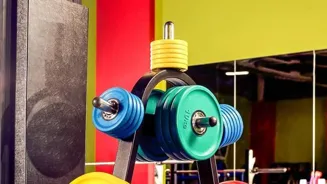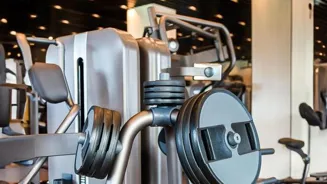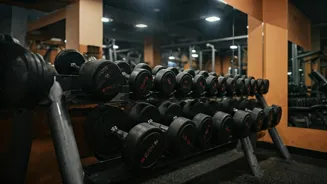Unveiling 7 Myths About Exercise: Debunking Common Fitness Misconceptions. Dive in to discover the truth behind these myths!
Namaste readers! In our quest for a healthy life, exercise is often touted as the
golden ticket. But, with so much information floating around, it's easy to get caught up in common fitness myths.
These misconceptions can not only hinder your progress but also discourage you from embracing a regular workout routine. Let's bust some of these myths and set the record straight, shall we?
Painful workouts are unnecessary; focus on consistency and moderation
This is perhaps the most pervasive myth in the fitness world. The idea that you need to be in excruciating pain after every workout to see results is simply not true.
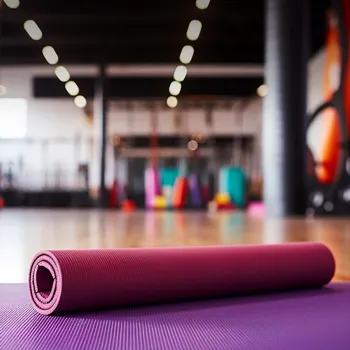
While a little muscle soreness is normal, especially when starting a new routine, pushing yourself to the point of intense pain can lead to injury. Remember, exercise should challenge you, not cripple you. Listen to your body, and don't be afraid to take rest days when needed.
Focus on proper form and gradual progression rather than chasing the burn. This approach is safer and more sustainable in the long run. Think of it like this: consistent, moderate effort is far more effective than sporadic, painful bursts.
Spot reduction myth: target fat loss with diet, exercise combo
Ah, the dream of targeting specific areas to lose fat! We've all heard it: "Do endless crunches to get rid of belly fat" or "Do thousands of leg lifts to slim your thighs." Sadly, spot reduction is a myth. Your body doesn't work that way. When you lose fat, it's a whole-body process.
While exercises like crunches and leg lifts can strengthen the muscles in those areas, they won't magically melt away the fat covering them. The key to fat loss is a combination of regular cardiovascular exercise, strength training, and a healthy diet.
These methods will help you reduce overall body fat, which will eventually lead to a slimmer appearance in the areas you desire. The more you keep to this, the better you will become.
Women can benefit from weight training without bulking up
This myth often prevents women from incorporating weight training into their fitness routines. The truth is, women don't produce enough testosterone to build muscle mass like men do. Lifting weights will help you build strength, tone your body, and increase your metabolism.
It won't transform you into a bodybuilder overnight. In fact, strength training is incredibly beneficial for women, as it helps improve bone density, reduces the risk of osteoporosis, and enhances overall fitness.
So, ditch the fear of bulk and embrace the power of weights to achieve a strong, toned, and healthy body. Women who lift weights have better muscles.
Cardio alone isn't enough for weight loss; combine with strength training for best results
Cardio is great for burning calories and improving cardiovascular health, but it's not the only piece of the weight loss puzzle. In fact, relying solely on cardio can lead to muscle loss, which can slow down your metabolism.
Strength training is equally important for weight loss, as it helps build muscle mass. These muscles help boost metabolism, meaning you burn more calories even when you're at rest.
A combination of cardio and strength training is the most effective way to lose weight and maintain a healthy body composition. Don't neglect the weights, they're your allies in the fight against fat. Consistency is the key, so choose exercises you enjoy and can stick with long-term.
Rest and recovery key for muscle repair, avoid overtraining. Incorporate rest days weekly
Rest and recovery are just as important as exercise. Your muscles need time to repair and rebuild after a workout. Overtraining can lead to fatigue, injury, and decreased performance. It is important to incorporate rest days into your workout schedule.
Aim for at least one or two rest days per week, where you allow your body to recover. You can still stay active on these days by doing light activities like walking, stretching, or yoga but avoid intense workouts.
Remember, consistency is key, but so is listening to your body and giving it the rest it needs to thrive. These tips are the most important for you.
Sweat doesn't define workout quality; focus on effort and intensity
Sweat is a natural cooling mechanism of the body, and the amount you sweat depends on various factors like genetics, environment, and hydration levels. Just because you're not dripping sweat doesn't mean you're not working hard enough. Focus on the intensity of your workout and how your body feels.
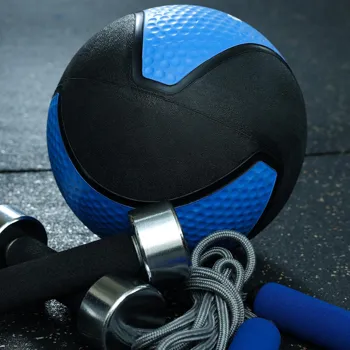
Are you breathing heavily? Are your muscles working? Are you feeling challenged? If so, you're likely getting a good workout, regardless of how much you're sweating. Don't measure your effort by the amount of sweat you produce.
Instead, focus on pushing yourself appropriately and achieving your fitness goals. The more you sweat should not determine how well you exercise.
AI Generated Content. Glance/InMobi shall have no liability for the content

